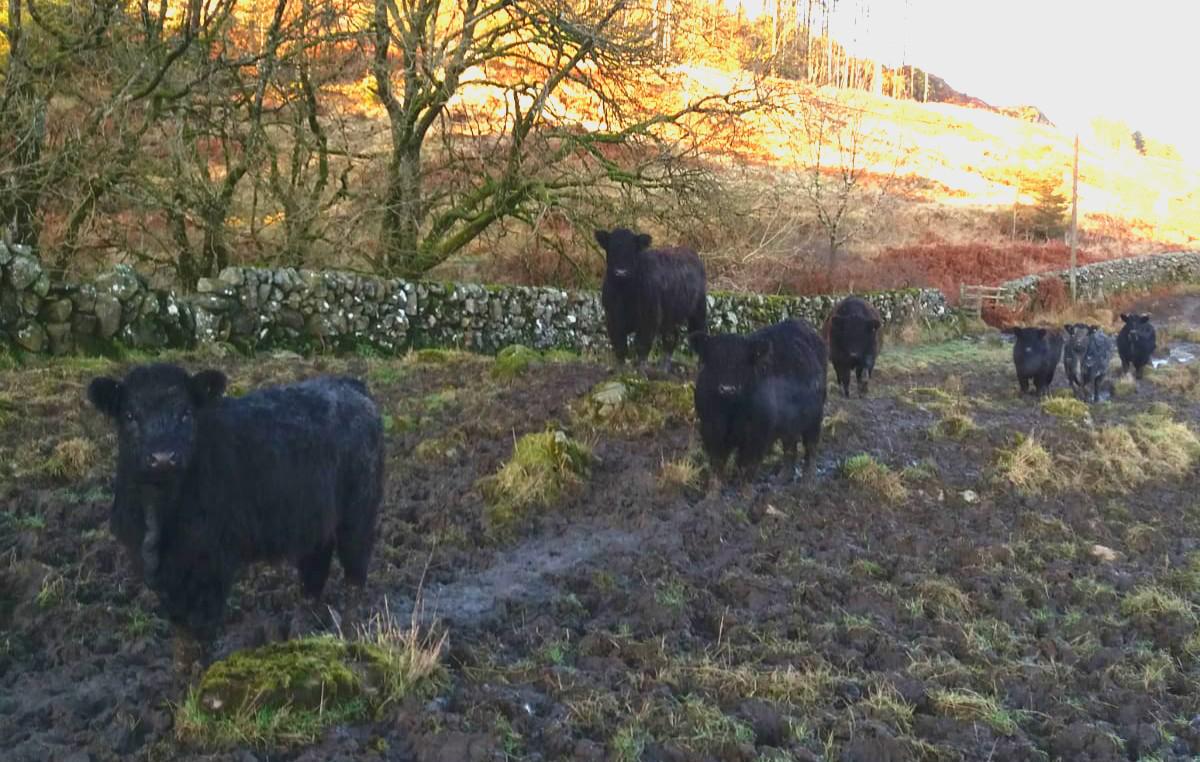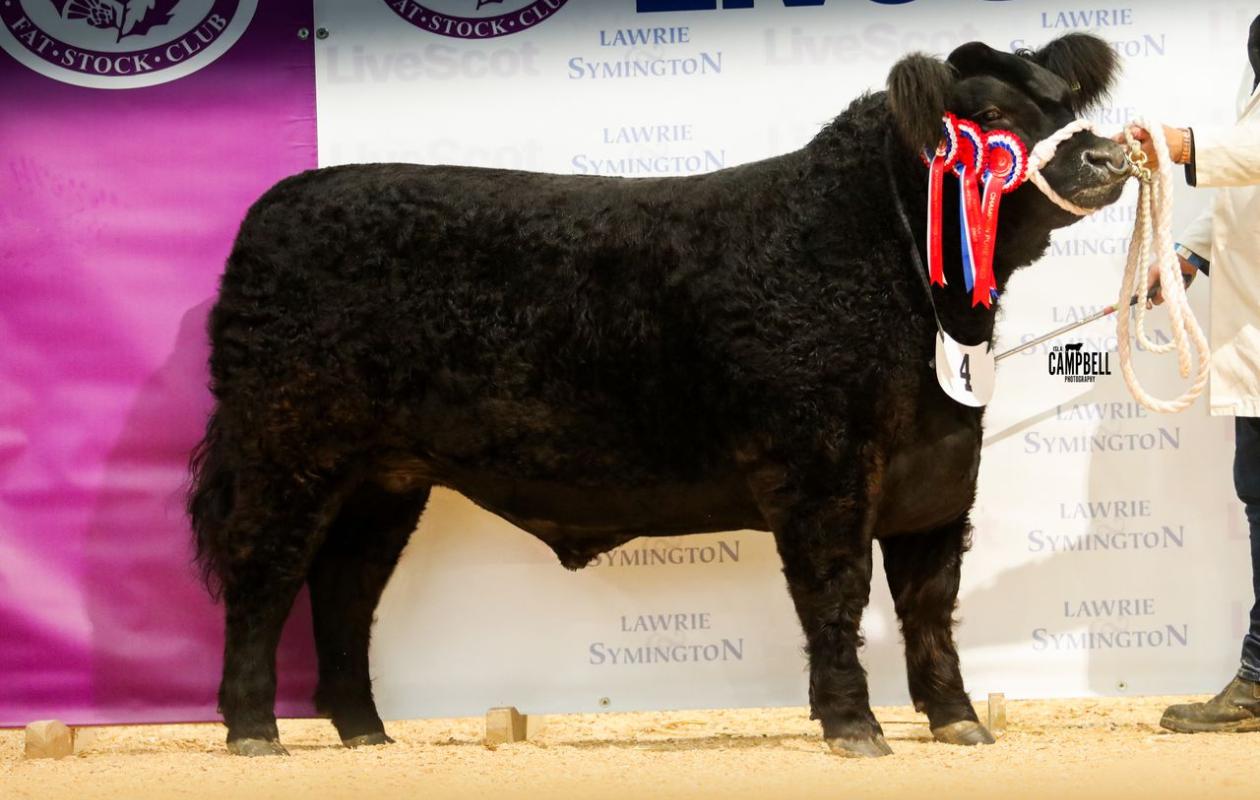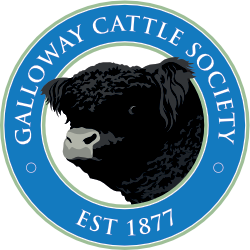Some people have Galloway cattle because they have been in the family for generations and some make the conscious decision to introduce them. Billy McMorran’s route to having one of the best Galloway herds around, was not quite so straight forward, as I found out when I met him, wife Mary and son William.
The McMorran family farm at Miefield, near Twynholm, in the beautiful south west of Scotland. Officially a “dark sky” area, the 1600-acre farm, is a typical Galloway hill farm, with no high mountains but all less favoured ground and a perfect place for Blackface ewes and Galloway cattle.
Although born only a few miles from the farm, Billy grew up in Ayrshire, when his parents moved to Shalloch Farm, near Dalmellington, on Craigengillan Estate, known for having the first tar macadam road in Scotland. “There was more of a track than a road to the farm,” Billy recalls, “and we had to collect our mail from a neighbouring farm.”
One day, while accompanying his father to pick up the mail, they met a lady with a hooped skirt. The doors of the farmhouse were split in two vertically and the three-year-old boy, couldn’t help but wonder how this beautifully dressed lady was going to manoeuvre herself through, with wooded hoops wider than both doors! At the moment of entry, his father scooped him onto his shoulders and by the time young Billy turned back to see the lady, she was already inside and he would never know how it was done. “I still wonder about it to this day,” he smiles.
She was not the only lady Billy has met over the years, however. “Lots of people walk here on the farm,” he says, “and I stopped to chat to a lovely red- haired lady one day on the hill. She was followed by someone I recognised as Pamela Stephenson, who enlightened me that I had just had a blether with Lady Sarah Fergusson!”
From a small boy, Billy was and is a shepherd at heart and he kept his first two pet lambs for 10 years, earning him £65, from their progeny.
In the early 1940s and with the aid only of a horse and cart, the family moved to Barbeth, on the same estate. It was war time and the estate and surrounding area was designated as a War Zone, for training soldiers and any movement around the area, even to the next-door farm, was only allowed by permit.
Soldiers came and went from the farm, with Billy’s mother helping with minor wounds and various chores. It was not unusual to find soldiers in the house and Billy thought nothing of the six who arrived one night to speak to her. Like others they came and went but it would later transpire, that these were the batmen for three generals, who would arrive shortly, accompanied by a whole battalion of soldiers, all of whom were fed and sheltered.

The three generals worked in secrecy but it was always believed that they were planning the D-Day landings, as the local area had similar tides to the Normandy beaches. A highly innovative plan, to supply the beaches with troops and tanks was formed and tanks and supplies became a regular sight in the area, before being hidden in the Galloway hills.
Billy always suspected that General Eisenhower was one of the generals but had no real proof, until a relatively recent article in a regional magazine, confirmed that he and Winston Churchill had met in a local hotel at the time.
In 1946, Billy and his family moved to Meikle Mochrum. This was where Billy’s involvement in Galloway cattle started with the 30-strong herd his father ran there. Tied in byres through the winter, all of the heifer calves were halter trained as calves.
Sadly, at the age of 16, Billy lost his father and had to give up the tenancy and the Galloways. He went to work for Tom McTurk, at Craigengillan, near Carsphairn, to enable him to support himself and his mother. “I remember walking Galloway bulls three miles through the snow, to meet the lorry to take them to the sale at Castle Douglas,” Billy recalls.
Billy married Mary in 1959 and became parents to William and Brian, both now farming in their own right. The opportunity to take on Miefield arose in 1970 and Billy was approached to apply for the tenancy. He offered £950 a year rent for the 1600 acre holding and following a meeting with the landlady, Mrs Walmsley, he was offered the tenancy.
The only issue was the question of taking over the standing stock of six Galloway cows and six heifers. Billy and Mary did not have the means to do this but on their reputation, they were loaned money by “11 honourable men” as Billy describes them and were able to start their now world-renowned Galloway herd.
Stock has since been exported all over the world, including Russia and Billy remembers receiving a phone call from the Russian Embassy in London, instructing him not to have any conversation with the six Russians arriving the next day to buy cattle. He did as instructed and the deal was done through the auctioneer.
This was during the time of The Cold War but Billy suspects that they just couldn’t speak English, although maybe his connections to a well-known general and prime minister had leaked out…

Their first bull was purchased from Blackcraig and set them nicely on their way to building the now 60-strong herd. The family have concentrated on heifer production, retaining eight stock heifers a year, with the rest sold at Carlisle with Blue-Grey calves at foot. “People are starting to look for smaller hardier cows again,” says William. “The Galloway is fitting the bill for people who want sound hardy cattle with good feet, that can live outside all year round.”
The proof of the pudding, as they say, is in the prices paid for their stock. They generally average between £1500 and £1900 per year, with their top price at 2800gns. While the family don’t show any more, the pre-sale show rosettes decorate the farm kitchen.
The current bull was purchased from Kilnstown, at Castle Douglas Market, for 6000gns and is considered to be the best bull they have ever had.
“We look for the brown skin of a traditional Galloway, good feet to last on the hills and good bone,” says Billy. “With the massive forestry planting 30 years ago, the breed has had to move in-by and has become less adapted to the hill. Farmers are beginning to see the advantages of a smaller beast, with less overheads and the more traditional hill cow is becoming part of that thinking. With an average lifespan of 15 years, the Galloway cow is producing more than most other breeds.”
Alongside the Galloways, Miefield, together with 120 acres of owned land at Tongland, also carries 1000 Blackface ewes, half of which are put to the Bluefaced Leicester and sold as Mule lambs at Castle Douglas.
Mary has run a B and B business alongside the farm for 49 years, having only just decided that it is time to call it a day but during that time, four generations of some families have returned to the hospitality at Miefield. A hospitality which spills into the local community, where both she and Billy have been very active in their 60 years together.
Sitting round the kitchen table, on a typically stormy Galloway day, eating Mary’s chicken and rice soup and homemade pancakes, reminiscing about their amazing life, it is easy to see how the McMorran family are the backbone of communities like theirs, as well as being sound forward thinking business people who support their breed and their industry.
Read the latest news...

2026 Spring Shows and Sales – Don’t Miss the Entry Deadlines!
2026 Spring Shows and Sales – Don’t Miss the Entry Deadlines!

LiveScot – FRIDAY 21st & SATURDAY 22nd NOVEMBER 2025
Full Report - LiveScot – FRIDAY 21st & SATURDAY 22nd NOVEMBER 2025

2025 On-Farm Herd of the Year - Results
The 2025 On-Farm Herd of the Year celebrates the dedication and achievements of Galloway cattle breeders across the UK and Ireland. This year, 24 herds took part in the assessment, representing three regions: Scotland and Northern England, Ireland and the Rest of England and Wales.
